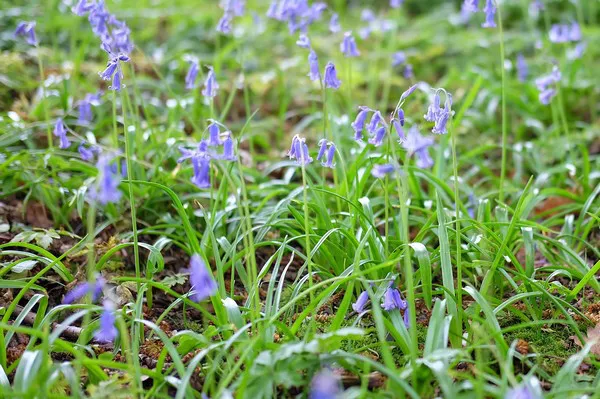The delicate beauty of butterflies adds a touch of enchantment to any garden or landscape. These graceful insects not only bring joy with their vibrant colors and graceful flight but also play a crucial role as pollinators. If you’re looking to create a butterfly-friendly haven, selecting the right flowers is key. In this article, we explore the captivating world of butterfly-attracting flowers, unveiling the factors that make them irresistible to these winged wonders and offering insights into creating a thriving butterfly habitat.
The Allure of Butterfly-Attracting Flowers: A Symbiotic Relationship
Butterflies and flowers share a remarkable symbiotic relationship – the fluttering insects seek nectar for sustenance, while they inadvertently aid in the pollination of the plants they visit. The selection of flowers to attract butterflies involves a combination of factors that cater to the insects’ needs and preferences, making your garden a paradise for both beauty and ecological harmony.
Understanding Butterfly Behavior and Preferences
1. Nectar-Rich Blooms: Butterflies are drawn to flowers with abundant nectar, a crucial source of energy. Flowers with shallow or tubular shapes, such as zinnias, asters, and coneflowers, provide easy access to nectar.
2. Bright and Bold Colors: Vibrant colors like red, orange, yellow, and purple catch the attention of butterflies. These hues serve as beacons, guiding the butterflies to a bountiful nectar source.
3. Fragrance and Aroma: Scented flowers appeal to butterflies that rely on their keen sense of smell to locate nectar. Flowers like lavender, bee balm, and phlox emit alluring fragrances.
4. Flower Shape and Landing Platforms: Butterflies have different feeding habits and mouthparts. Flowers with flat landing platforms, such as daisies and sunflowers, accommodate a variety of butterfly species.
Essential Butterfly-Attracting Flowers
1. Milkweed (Asclepias): A vital plant for monarch butterflies, milkweed serves as both a nectar source and a host plant for their caterpillars. Its vibrant flowers and ecological significance make it a must-have in butterfly gardens.
2. Liatris: Also known as blazing star, liatris produces tall spikes of fluffy, nectar-rich blooms that appeal to a range of butterfly species.
3. Buddleia (Butterfly Bush): True to its name, the butterfly bush is a magnet for these insects. Its cone-shaped clusters of flowers release abundant nectar, drawing various butterfly species.
4. Echinacea (Coneflower): With its striking petals and raised central cones, coneflowers provide ample nectar and a convenient landing platform for butterflies.
5. Zinnias: Available in a spectrum of colors, zinnias offer abundant nectar and are especially attractive to painted lady butterflies.
6. Verbena: This low-growing perennial produces clusters of small, fragrant flowers that butterflies find irresistible.
7. Coreopsis: Also called tickseed, coreopsis features daisy-like blooms that provide both nectar and pollen, attracting butterflies and other pollinators.
8. Phlox: Fragrant and visually appealing, phlox flowers are a favorite of butterflies like the eastern tiger swallowtail.
9. Asters: Fall-blooming asters provide a late-season nectar source, ensuring a steady food supply for butterflies before winter.
Designing Your Butterfly Haven: Considerations and Tips
1. Plant Diversity: Incorporate a variety of butterfly-attracting flowers with different bloom times. This ensures a continuous nectar supply throughout the growing season.
2. Native Plants: Native flowers are well-adapted to the local ecosystem and are more likely to attract native butterfly species. Research which species are native to your region.
3. Group Plantings: Planting flowers in clusters or drifts makes them more visible to butterflies and facilitates efficient foraging.
4. Shelter and Sunlight: Butterflies require sunny spots to warm their wings for flight. Integrate shrubs or trees to provide resting spots and shelter from strong winds.
5. Avoid Pesticides: Pesticides harm not only harmful insects but also beneficial ones like butterflies. Embrace natural pest control methods to maintain a healthy ecosystem.
6. Water Source: Provide a shallow water source, like a birdbath with stones, for butterflies to drink from and gather minerals.
7. Caterpillar Host Plants: To support the entire butterfly lifecycle, include host plants that caterpillars feed on, such as parsley for swallowtails and dill for black swallowtails.
Educational Opportunities and Conservation
Creating a butterfly-friendly garden offers more than just visual delight; it presents an opportunity for education and conservation. Observing the life cycle of butterflies, from egg to caterpillar to chrysalis and finally to adult, can be a fascinating learning experience for individuals of all ages. Additionally, by preserving and enhancing butterfly habitats, we contribute to the conservation of these delicate creatures and the ecosystems they are a part of.
Conclusion
The allure of butterflies is undeniable, and by selecting the right flowers, you can transform your outdoor space into a haven for these graceful insects. By understanding their preferences, integrating diverse plants, and creating a hospitable environment, you can attract a variety of butterfly species and witness the captivating dance of colors and flight in your own backyard. As you embark on this journey of beauty and ecological significance, remember that your butterfly garden not only brings joy to you but also supports the intricate web of life that depends on these winged wonders.


